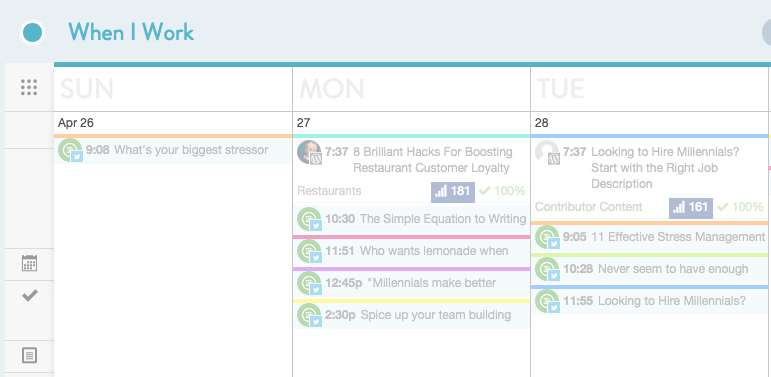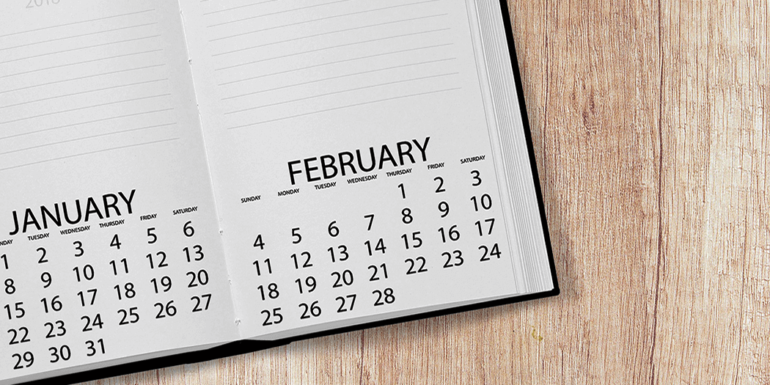- Mar 06, 2018
 0
0- by A2 Marketing Team
One of the hardest things about running a website is publishing new and engaging content on a regular basis. Even if you’re capable of producing quality pieces, you still need to figure out how often you should post them. Wait too long, and your audience might forget about you. Rush them out, and they may not have time to digest all your content.
There’s no hard and fast rule for how often you should publish new posts. However, in general, your rate of publication should grow as your site does (although some websites buck that trend). That way, you’ll be able to keep your sizable audience entertained.
In this article, we’re going to talk about why you should implement a regular posting schedule for your website. Then we’ll talk about two of the most common types of schedules, what their pros and cons are, and which types of sites should use each one. Let’s get to it!
Why Your Website Needs a Regular Posting Schedule

One thing a lot of people don’t take into consideration when they start a new blog or website is how often they’ll be able to create and post new content. Developing a schedule requires consistency, which can often make running a blog feel like a job. However, it’s an effort that can also pay off in many ways. For example:
- It lets visitors know when to check back for new content. If you publish an original article every Monday, for example, you may see a spike in traffic that day as people visit your site to see what’s new.
- You can plan content in advance. To expand on that last example, if you know you have to prepare a new post for each Monday, you can plan it well in advance. That means you can plot which topics you’ll cover each week, and even swap items around on your calendar if necessary.
- It keeps everything organized if you’re part of a team. Managing your content is often easy when you’re the only person writing for a website, but not so much if you’re part of a team. Without a schedule, things can get messy.
Talking about schedules can be tedious, but consistency is vital to growing a successful website. News sites, for example, often need to publish content daily to stay relevant. If you’re running a blog, you’ll also want to maintain a consistent rate of publication, so people don’t think you’ve stopped posting. Any time your website revolves around content, putting a schedule together is in your best interest, even if you’re only plotting a week or two ahead of time.
There are exceptions to this rule, of course. Take Wait But Why, for example. It’s a massively popular blog built around the concept of only publishing content once every blue moon, and it works. However, replicating that success is a long shot, so your best bet is to stick to a posting schedule and do your best to create outstanding posts every time.
2 Types of Posting Schedules For Your Website
When it comes to posting schedules, we like to keep things simple. Quality content that follows Search Engine Optimization (SEO) best practices and comes out often should enable you to build an audience over time. In our experience, these are the two types of schedules that work best for most sites and blogs.
1. Weekly and Bi-Weekly Posts
Most blogs we’ve run across stick to weekly or bi-weekly posts, because it’s a simple and effective schedule. Here’s why these approaches work:
- They give you enough time to research posts. A week between articles is more than enough time to dig deep into the topic you want to cover next, write a draft, and polish it as much as possible.
- It’s often enough that your visitors probably won’t complain. Some of your hardcore fans might want you to post content more often, but it’s hard to complain when you get excellent new posts week in and week out.
- It gives you enough time to cool off. Producing new content for a blog day after day can burn you out if you’re not accustomed to that pace. Weekly and bi-weekly postings should give you enough time to decompress and pay attention to other projects.
In most cases, we recommend starting off with a single article per week until you get used to the pace. Then, as your website grows, you can think about increasing the frequency to bi-weekly publications. The main exception would be if your pieces tend to be on the longer side (think 1,500 plus words). In that case, it’s alright to maintain a weekly posting schedule, unless you have someone else who can help you produce new pieces.
For even better results, you’ll want to stick to publishing content on the same day(s) each week, so your visitors will know what to expect. However, don’t be afraid to hold a piece back now and then if it isn’t up to your standards. As in most things, quality trumps quantity when it comes to blog posts.
2. Daily Publications
Chances are you follow at least one website that publishes new content daily and has a massive audience. This approach requires a lot of work and coordination to pull off, but it can be very effective. Let’s talk about why:
- It enables you to cover a massive amount of topics. Even if you take weekends off, that still leaves you with 260 posts per year, which should be enough content to fill out a handful of books.
- You can employ multiple authors. Successful websites with active posting schedules almost always have several writers on their staff, working to keep the wheels moving.
- It gives visitors an excuse to keep coming back. With new articles posted daily, your visitors shouldn’t have the chance to get bored at all.
Of course, this approach is almost impossible to pull off if you’re working alone, at least if you don’t want to burn out in a few weeks. Plus, it can be overkill if you’re starting a new website, since a lot of that content will unfortunately go unnoticed for a while.
In most cases, we recommend waiting until you have a decent amount of traffic coming in consistently, before you crank up the valve and start publishing content daily. Plus, that gives you enough time to assemble a team of talented writers and make your choices carefully.
Conclusion
Most websites need to publish new content regularly if they want to thrive. Without new posts, visitors may not be able to find you, or they might move on to other websites. Ideally, you should set a schedule for new content and stick to it, increasing your pace as the site grows.
If you’re not sure how often you should post new content to your website, there are two simple schedules that do the trick in most cases:
- Weekly and bi-weekly publications. These are the perfect rates for small and growing blogs, involving one or two authors.
- Daily posts. This type of schedule is highly effective, but only sustainable if you’re a writing machine or part of a team for a website with a large following.
Image credit: Pixabay.












